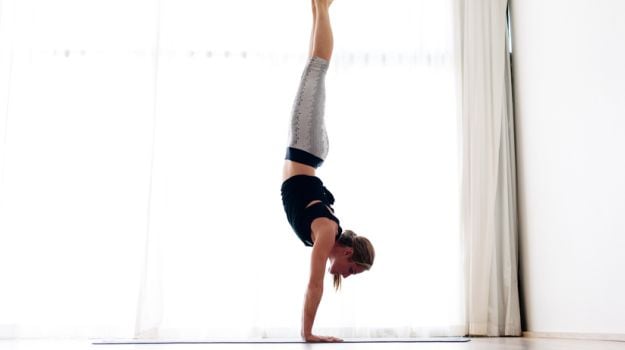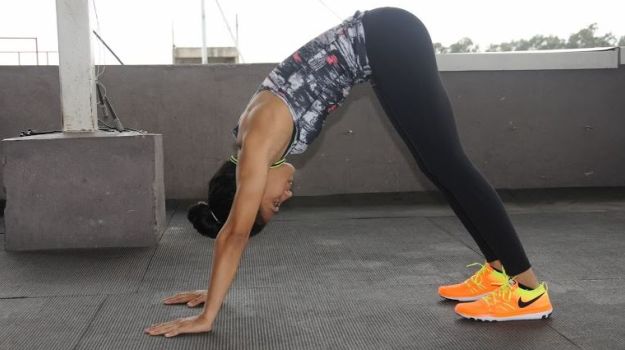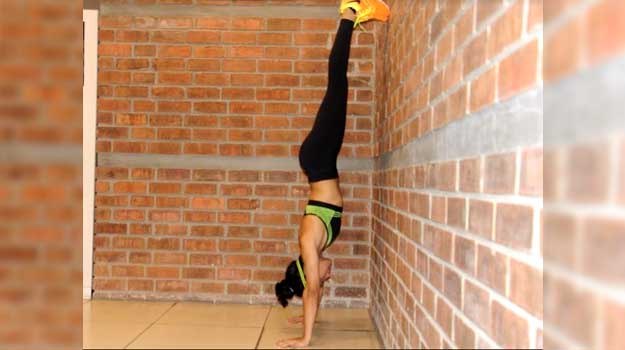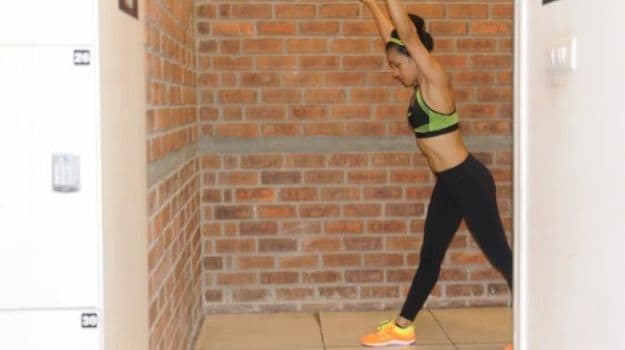Handstand: The Unsung Hero of the Fitness World

Yoga is not just a way to stay fit, it is also about finding inner peace while you sit still. The practice makes you more aware of your body and your senses as you breathe in and out, while simultaneously focusing on different muscles of your body as you get a nice, long stretch. If you have kept away from yoga because you feel it is ancient and boring, think again! We live in a dynamic age where it is easier for two forms of art to find common ground and arrive at something new and exciting. Take Zumba, for example, which combines aerobics and dance moves to give you a high energy workout regime. Another example is Payo, which brings together pilates and yoga to give you the best of the two worlds. Certain yoga asanas are also used extensively in various workout regimes to reap incredible benefits.There exists a section of yogic postures that works extremely well for building resistance and endurance. One such posture would certainly be the handstand. It takes practice, certain level of fitness and precision to nail it and get around to doing it on a regular basis. However, those who do get far enough to master the handstand can’t vouch enough for its efficacy and bevy of benefits. Handstand is known as Adho Mukha Vṛkṣāsana in yogic terminology, and interestingly, the posture also borrows a great deal from gymnastics.
Before I take you through the steps of doing a handstand, let us take a look at its many benefits:
– It helps in making your upper body very strong. It works on your shoulders, arms and upper back.
– Whether you are holding a handstand against the wall or a free handstand, it requires balance and as you get better at it, you get steady.
– Being upside down needs a lot of ‘core’ engagement; it needs you to be constantly working on your abs, obliques, hip flexors and hamstrings. This will over a period of time enhance your core strength drastically.
– Being upside down also increases blood circulation to the upper body. It also improves digestion.
– It brings blood to the adrenal glands to help reduce production of cortisol, alternatively known as the stress hormone.
Prepping Up
If you have never attempted a handstand before, start with a simple downward dog variation. This works on upper body mobility and core stability.

Going Ahead
Now, you can start using a box or a bench to help you progress toward a handstand. Place your feet up on a box or a bench. Try to keep your legs straight. Walk back with your arms as you drive your butt up to the ceiling. You need to get a nice straight line from the heels of the palm to the tailbone. Keep the abdomen engaged the whole time. This position will engage your upper body, core, legs and glutes.
Always remember, the higher the box, the harder it will get. You can increase the height gradually.
Getting Closer
Once you are comfortable with these bench/box holds, you are ready to begin with wall holds followed by wall walks. Walk your feet a few feet up the wall. Get a nice straight line from the heels of the palm to the tailbone. Hip to feet should be one straight line. Create a 90 degree angle with your body. Keep your back flat and abdomen engaged.

Almost There
After getting a hang of these, you can now walk your feet up the wall. Now the aim is to get your body parallel to the wall. Take your feet all the way up, as straight as you can. To begin with, keep your arms away from the wall, based on your comfort. As you get more confident parallel to the wall, get your arms closer to the wall.
With this handstand wall hold, ensure that your body is straight; do not arch your lower back. Maintain a straight line from the heels of your palm all the way up to your feet.

From here, develop more core stability and strength for free handstand by lifting one foot off the wall.
The Handstand
You can now learn how to kick up to a free handstand. Stand facing the wall, one foot away from it. Place one foot in front of the other. Raise both hands up towards the ceiling. When the arms go down to the ground, let it be shoulder width apart. As the raised arms come down to the ground, let the leg kick up towards the wall, one at a time. Both the movements happen simultaneously. It may seem rather scary to kick up with the fear of falling. Have someone stand beside you and assist you in pushing the legs up. It will take a few attempts before the legs go up without effort.

As you get comfortable kicking up to the headstand and holding it for a long duration, start getting one foot away from the wall and then slowly the other. This will help you get the free hand stand over a period of time.
Always practice postures like these under strict supervision. Though the position looks scary and difficult to master, once you are through with it, there is nothing like it. It is worth the pain and all the effort. So be at it, and just don’t give up!
[“source-ndtv”]


